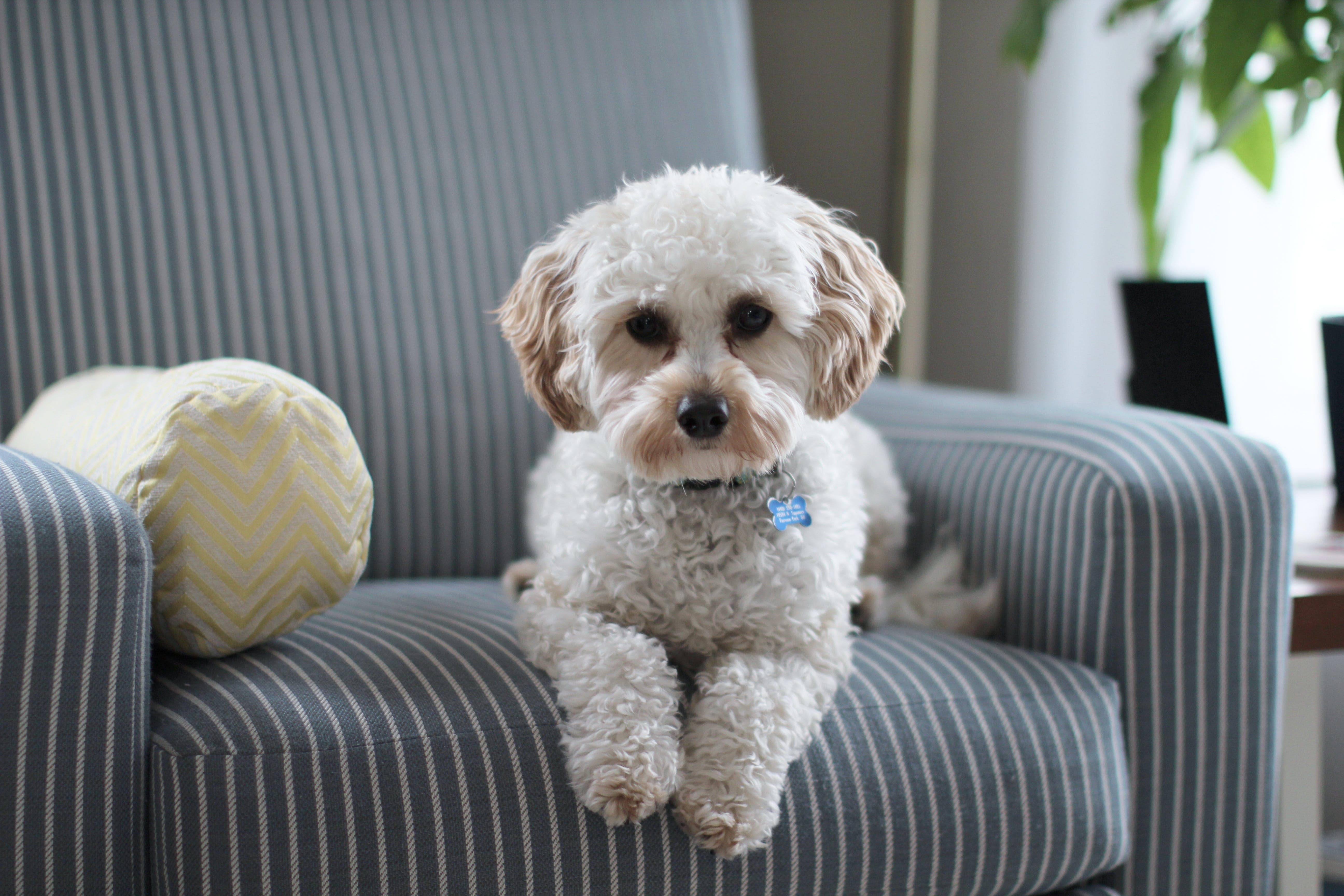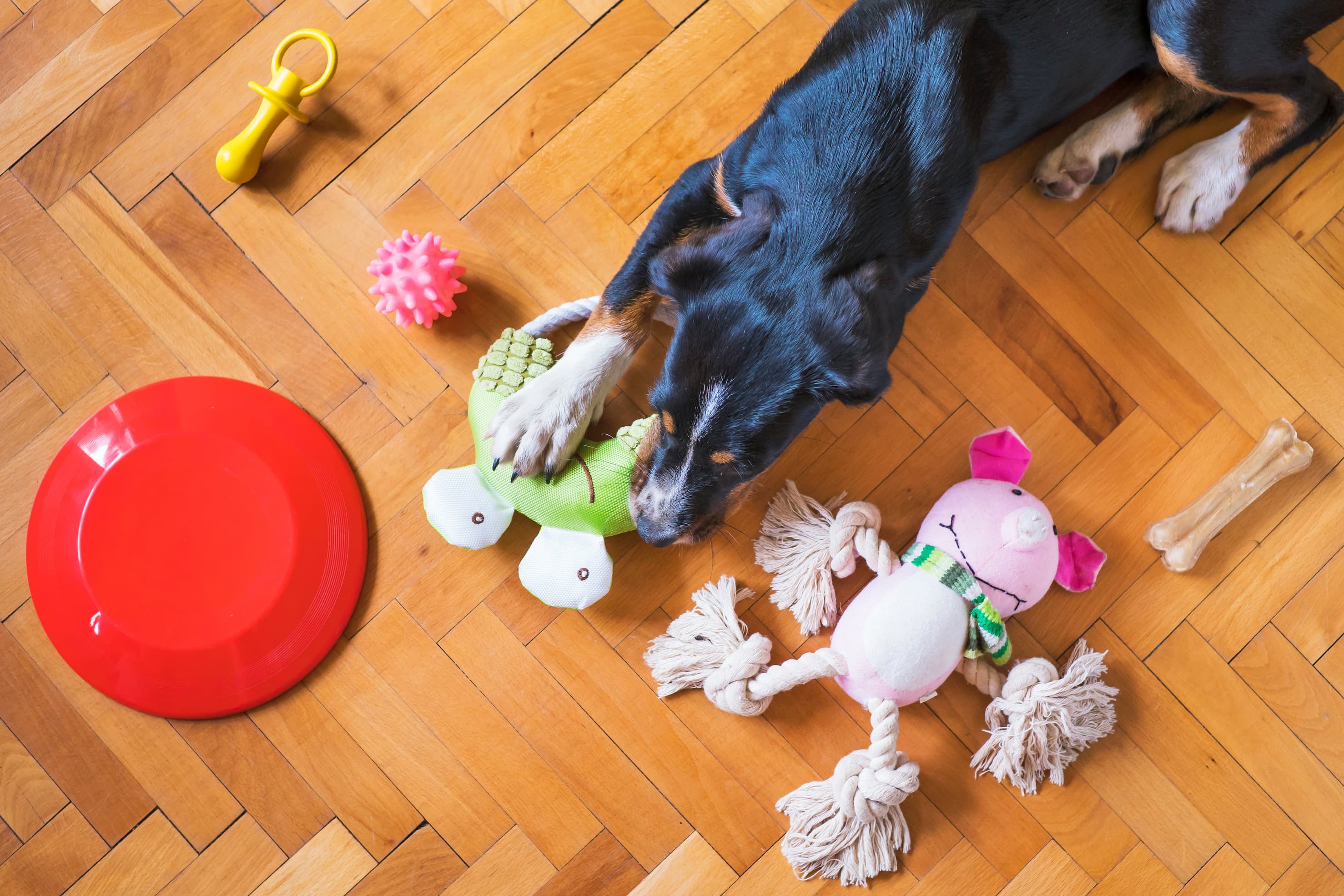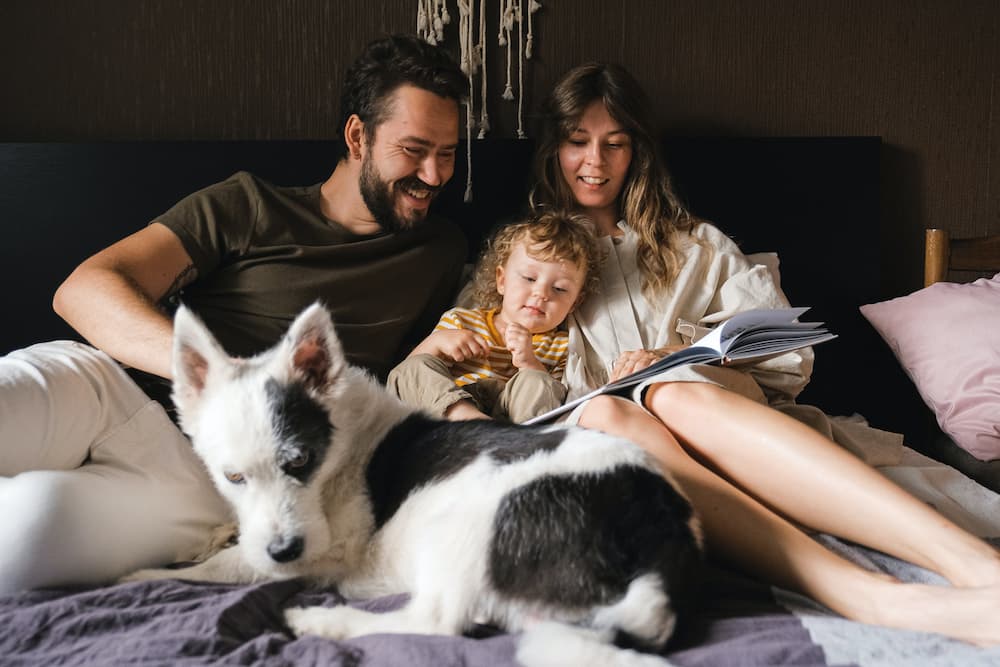

Welcoming a New Canine Companion? A Comprehensive Guide to Getting it Right
Adding a furry friend to your family is an absolute joyride, but let’s be real – those initial days can be a tad stressful for both you and your new canine comrade. The secret sauce? Patience! And of course, a little prep goes a long way. Dive into our guide for all the must-do’s before the homecoming and throughout the ‘getting to know each other’ phase.

Writer Animalia Team
12 min read

Getting the paw-ty started before your new Pal arrives
Setting the stage: Get your home ready
Preparing for a new dog in your home is akin to readying your space for a new baby. The focus is on establishing a safe environment, shielding your new companion from potential hazards. Conduct a thorough walkthrough of your home to eliminate any items he might chew or swallow. Secure exposed electrical cords, pad sharp edges on furniture, and install a baby gate to restrict access to stairs or other risky areas. Take precaution with poisonous houseplants, consider fencing off the garden, store cleaning materials and medicines out of reach, and ensure all windows and doors are consistently closed. For added safety, the installation of nets might also be considered.
Regardless, much like caring for a baby, it’s crucial to have a vigilant eye on your new canine companion during the initial period as he explores the house. Guiding his behavior towards appropriate spaces is key. Despite our best efforts in preparation, a new dog might still catch us off guard with something we hadn’t anticipated. Vigilance and guidance remain paramount in ensuring a smooth transition for both the pet and the household.
Create a dedicated space for your new canine companion
Every member of the household deserves a quiet space, and that includes our furry friends. We’ve set up a special space just for our dog, where he can eat, sleep, and play comfortably. Consider placing this area near a window for soothing natural light. Equip it with a cozy bed, food and water bowls, and an assortment of toys. For puppies, the use of a crate or training fence can be invaluable in addressing abandonment anxiety, curbing destructive behavior, and establishing a daily routine. While it may be a bit more challenging with adult dogs, it’s not impossible – consulting a professional trainer can be a wise choice.
Gather your family and discuss expectations and responsibilities
Determining the primary caretaker, daily walking routines, meal schedules, and even where the new dog is allowed to rest – these are crucial discussions to have within your household. Ensuring a warm welcome for your new furry family member and preventing confusion among family members, these conversations are highly beneficial. Engage in discussions about each member’s role and set some basic rules. Collaboratively decide on the designated corner for the dog, establish which rooms are accessible, determine regular feeding times, outline play schedules, and establish guidelines for daily walks. Deliberate on issues such as allowing the dog on furniture or sharing table scraps. Clear and consistent communication is key. If there are young children at home, take the time to explain how to interact with and care for the dog, striving to align everyone’s expectations as much as possible.

Gear Up: Choose the right equipment for your new canine companion
Here’s a brief checklist encompassing essential items, along with recommended but highly advisable additions for your home. Additionally, there’s a separate list tailored specifically for puppies.
Essential Checklist:
- Age-appropriate dog food
- Food and water bowls; consider a slow-feeding bowl if desired
- Collar or body harness
- Leash suitable for walks or hikes
- Pest control measures (collar, ampoule, or bullet) for fleas and ticks; consult the vet for guidance
- Comfortable bed with a removable, washable cover; consider the dog’s age and specific health needs
- Grooming and cleaning supplies, including brushes,shampoo, and more.
Supplemental List – Recommended Additions:
- Small, soft training snacks for initial contact and behavior training
- Larger snacks for substantial rewards and treats
- Durable and safe toys in various styles, including squeaky tennis balls, ropes, soft squeaky toys, hard chew toys, and feeding toys like Kong.
Additional Items for Puppies:
- Puppy fence for demarcation or training cage
- Soft bite toys
- Pads for training needs
Adjustment Phase: Navigating the Initial Days at Home
What to expect in the first days: The dog’s adaptation period
It’s crucial to recognize that the initial days at home pose a challenge not only for you and your family but also for the dog. Consider this – all the familiar sights, smells, and sounds have vanished, and the dog must now acclimate to an entirely new environment and routine. What might appear exciting to you could be perplexing and frightening for the dog. The house is unfamiliar, family members are strangers, and even the resident cat or dog is perceived as a potential threat. The journey toward the dog viewing your home as a comfortable and secure haven is a gradual one. In the initial days, the experience is still new and potentially overwhelming for the dog.
Smooth transition tips: Facilitating an easier initial adjustment period
- Facilitate the acclimation process at the dog’s own pace – introduce him to a central room, allowing him to explore the new environment gradually, including the smells, sights, and sounds. Avoid overwhelming him with excessive affection, games, or activities all at once, as this may cause stress and confusion. Permit the dog to express himself in ways that bring comfort, even if it means adjusting certain rules or revising your expectations. If, for instance, he prefers to cuddle and stay put for an entire day, respect that choice. Not every dog will readily and confidently embrace a new home. Some may exhibit behaviors like excessive barking, indoor accidents, or a strong desire to stick close to you. The dog’s adjustment period is largely influenced by its individual character, past experiences, and the environment it came from.
- Support the adjustment process by incorporating regular walks to help the dog expend energy – In cases of heightened stress, take the dog on walks to reinforce the idea that energy release occurs outside, while home serves as a primary resting place. This mirrors the natural balance seen in the wild, where activities like hunting and being active happen outdoors, while the den is reserved for rest.
- Allow the dog to take the lead in approaching you and the family – recognize that individual dogs have varying comfort levels with initial interactions. Some may exhibit immediate friendliness and seek physical closeness, while others may prefer a more gradual introduction. Avoid chasing or imposing a relationship; instead, sit calmly on the floor and let the dog decide the pace of approach or withdrawal. This approach significantly contributes to building trust between you and the dog. Attempt to reach out for a gentle introduction, and if the dog responds positively by sniffing, it indicates receptiveness. On the contrary, if he looks away or avoids contact, respect his boundaries, demonstrating understanding, and allowing him space at that moment.
- Choose the right timing – by planning the dog’s arrival for a weekend or a period when you can be consistently at home for several days. This approach facilitates the establishment of a daily routine and allows ample quality time for the initial bonding process.
- Strive to create a tranquil and calm home environment – minimizing unnecessary background noise, unusual events, or unexpected guests. This deliberate choice provides both the dog and yourself the peace needed to adjust and foster a deeper understanding during the initial phase of getting acquainted.
- Engage with the dog at eye level and we mean that literally – avoid standing over or sitting on higher surfaces. Instead, sit on the floor, play with the dog at their height, and encourage direct eye contact.
- When picking them up, avoid sudden movements that might startle or frighten them. Gradually introduce a signal before lifting them, but initially, it’s best to crouch down to their level and attract their attention gently.
Getting to know the house
Initiate the house introduction by acquainting the dog with the personalized and confined corner you’ve prepared for him. Allow him to sniff around, familiarize himself with the bed, food bowl, toys, and the designated area for relieving himself. As he becomes calm and comfortable, gradually expand his exploration to other areas of the house. In the initial days, limit the time he spends alone, providing short periods to help him acclimate to situations where you won’t be at home and reinforce the understanding that you always return.

Introducing your dog to the family, especially children
A grand, multi-participant welcome party may not be ideal for dogs. If you have a large family, take the time to introduce your new canine companion gradually to each family member individually. The key is to foster calm interactions without unnecessary drama.
Pay special attention to excited children. While the enthusiasm at home may be overwhelming, with kids eager to play, hug, and shower affection (sometimes too exuberantly), it might be a bit overwhelming for the dog. Therefore, it’s crucial to monitor young children, especially in the initial days, allowing the dog sufficient time to adapt, rest, and enjoy moments of peace and sleep. Remember, a dog is not a new toy for small children. If the dog prefers solitude or is not interested in playing, respect his right to space. Avoid getting upset with the dog and teach the children to understand and respect his boundaries.
Introducing another dog or cat at home: Navigating the initial meeting
The first encounter between a new dog and the existing canine or feline member of the household can significantly influence their future relationship. This initial meeting may pose challenges for both parties—the new dog confronting an additional adjustment, and the existing pet feeling like an intruder. To alleviate tension, initiate the introduction in an outdoor setting for the first time. Allow the dogs to sniff each other, closely observing their body language to identify potential signs of aggression. If any problematic situations arise, separate them and attempt a new approach once they have calmed down.
In the case of a cat, the situation is a bit more complex since, especially given the territorial nature of cats. Rather than bringing them together immediately upon the new dog’s arrival, consider taking them for walks on leashes, allowing them to walk parallel to each other. If they display curiosity and a desire to interact, permit them to do so. The key is to foster a sense of group mentality, conveying to both the cat and the dog that they are now part of the same group, with you as the leaders, and they need to learn to coexist. Another helpful strategy is to mix their scents—place the cat’s blanket in the dog’s bed and vice versa. This approach can assist in acclimating them to each other’s presence.
Establishing some basic house rules: Guiding your dog through the adaptation period
The adaptation phase serves as a testing ground for boundaries, as the dog navigates what is permissible and what is not. Your role is to assist in this process by setting clear rules of behavior—permitting what’s acceptable and preventing what’s not, consistently and calmly, without resorting to anger or shouting. Since our dogs can’t verbally communicate their inquiries, they rely on trial and error. Establishing these clear rules forms the foundation for a future relationship built on trust.
The concept is straightforward—where a limit is necessary, set it unequivocally, and where a positive alternative is available, present it. For instance, if you catch the dog playing with a forbidden object, replace it with an appropriate toy. This underscores the importance of vigilant supervision during the initial period to prevent the establishment of negative habits that may arise when not addressed in real-time due to a lack of presence.
Establishing a daily routine – Creating a routine is key to promoting your dog’s well-being. Having a clear understanding of what to expect and when provides a sense of security, making it easier to instill basic household habits. Start by implementing a feeding schedule, offering meals at the same time each day, whether you feed your dog once or twice daily. Ensure a constant supply of drinking water is available. By observing when he drinks, you can anticipate when he might need to go outside.
When it comes to potty training, prioritize preventive measures by taking the dog outside when you sense he needs it, avoiding the risk of delays. The clearer the routine is for the dog, the quicker he’ll comprehend your expectations.
Setting exercise routine – Ensure a consistent daily walk routine, adjusting the frequency and length based on the dog’s age. Stick to regular hours to provide predictability. Incorporate a daily schedule for games and physical training, tailoring activities to the dog’s age and medical condition. Dedicate 15-20 minutes to active play.
When initiating these routine activities, use clear and pleasant verbal cues beforehand. Announce activities such as “walk” or “food” in an inviting tone to create a positive association.
Caring for the health of your new dog
Bringing a new dog into your home comes with the responsibility of safeguarding both their physical and mental well-being. Key steps include finding a veterinarian that aligns with your preferences, scheduling an initial clinic appointment roughly a week after the dog’s arrival, adhering to a well-organized vaccination plan, and considering health insurance.
Once everything is in order, take a moment to appreciate the well-planned preparation. The initial days and weeks may be an emotional roller coaster, but with proper preparation, you’ve earned some well-deserved rest. Above all, anticipate many days filled with joy, happiness, and shared adventures ahead.





We offer the most
comprehensive coverage
out there
car with a spare tire for life’s bumps.
Having Animalia is like a pimped-out
Rolls Royce with a swimming pool
in the trunk.



Get your pet insurance quote
Pet type
- Dog
- Cat
What is your pet's name?
Zip code





